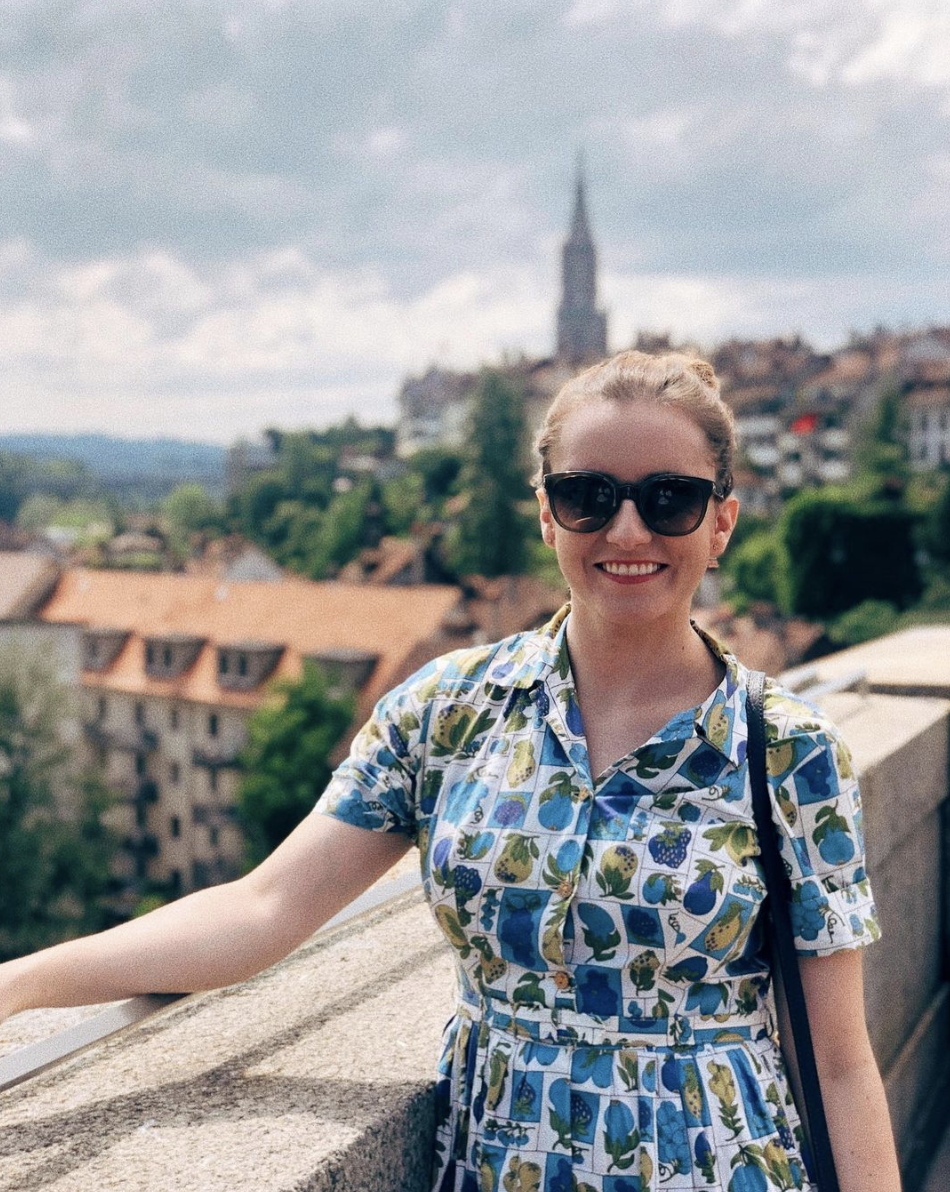5 Scenes to Add to the Second Act of Your Script
/Without a doubt, writing the second act of any type of story is incredibly difficult, but writing the second act of screenplay is often even harder simply because every single scene must count. There is no time for dawdling plots or loitering characters – everything must either move the plot forward or reveal information about the character.
You could argue books are like this as well, but with film, since your story is being presented to a potentially large audience, you must keep their attention, and you must do it well, making nailing the second act absolutely essential.
But when you’re writing – especially the first draft – that’s not always as easy as it sounds. The beginning, or the first act, of a screenplay, is so fun in comparison. You set up the world, introduce characters, indicate conflicts. It’s super clear what you need to do.
But then your leading lady sets off on her journey to join a roller derby team or set her son up with a team of female influencers, and suddenly you’re clueless as to what to do next.
You’ve got sixty pages or so in front of you, and all you can think of is that ending you carefully crafted when the idea came to your head.
How the heck do you make it through?
Most people will tell you to escalate conflict, take away things from the protagonist, and to really challenge your characters. While this advice is wonderful advice – after all, nobody likes an “easy” story without confrontations, struggles, and downfalls – sometimes it is still not enough to get us through that middle part of the story.
I know I for one have had moments where people have told me I need more conflict or that they feel like nothing has happened – because I was so fearful of creating too much cheesy drama – and I would look at them practically begging for the solution as to what to fill all that empty space with!
So with that in mind, I’ve gone beyond the typical “escalate conflict” and “increase tension advice,” giving you five scenes you can add to the middle of your script for when things are slow and you have no idea what to add next.
This works especially well with literary scripts, like the type I teach to write in Swank Up Your Script, because the focus in those scripts is more internal, the main focus of the five scenes I’ve listed below.
In general, these are scenes that can fill that space outside the midpoint and tense moments guiding you towards the climax. They are scenes that can potentially plant the seed for more conflict, but in a subtle way, and they can work for any type of movie, whether you have an independent masterpiece like Moonlight or an action-packed thriller like Mad Max.
Beneath each scene, you will find three example scenes, many of which will contain a backstory leading up this particular scene to put everything in context.
Use these scenes ideas to further develop your own!
Scene #1: One character has a moment of serious doubt about another character and challenges the relationship.
Doubt alone can destroy any relationship. Doubt suggests that someone doesn’t believe someone, and the closer they are to that someone, the more hurtful this may feel.
A moment of doubt can occur at any point in your script and depending on the two people’s relationship, the more damaging that doubt can be.
For instance, one character doubting a friend after years of loyalty is a deep wound to that friendship, but also is maybe one that the two can easily overcome since they have so many years behind them.
But what about two people who didn’t trust each other at all, then came to trust each other, then one of them suddenly became doubtful? See how much more easily that doubt between the two could cause the relationship to crumble?
A scene in which something like this occurs would then give you a moment of conflict to stem future scenes from, addressing how this tiny bit of doubt shapes the rest of your story, but it can also be the very thing that gives your character strength later on, making it a simple yet effective thing to insert into your second act.
Example Scenes:
Sahar professes her desire to quit smoking, suggesting it will yield life changing results. Mira, a lifelong friend, chuckles at the idea, demonstrating her doubt. A conflict ensues in which Sahar is upset at Mira for not being supportive. Mira points out that Sahar has tried this multiple times, and always failed.
Iago, works at a local grocery store. It’s not his favorite job, but he’s worked there for years. After witnessing a wonderful concert the previous week, Iago finally recognizes that his work is not his dream job, and that he really wants to become a singer. One day, when a customer is shopping, they ask about a certain wine. Iago gives an expert answer and the customer looks up at him doubtfully. They walk over and ask a different employee a different question. Iago decides to quit his job a few scenes later.
Leila and Isra have recently become best friends. They do everything together. When Leila asks Isra to come to her piano recital, Isra quickly promises she will. Leila, taken aback and suspicious – wounded by previous friendships – questions whether Isra really will go. Isra reacts angrily at Leila’s doubt, and they both go their separate ways.
Scene #2: A character reveals information they shouldn’t have
When a character reveals information they shouldn’t have, a whole slew of problems emerge.
The first problem is the most obvious one – someone who shouldn’t have heard something, has now heard it.
Whether it was confidential information about someone’s plans or something more hurtful, such as someone revealing what a friend really thinks of them, the aftermath is always one of a new reality for the person who wasn’t supposed to hear what they heard it.
After this information is revealed, there is also the conflict of the immediate guilt on the person who revealed the information’s part – unless of course they did it on purpose. However, if they didn’t mean to reveal this information and did it on accident, this then creates a deep internal conflict for that particular character.
Of course, these conflicts that spawn from the revealing of information can only lead to one eventual greater conflict – when people find out that one character (the one who knew the secret or the information) has told said information to the character who wasn’t supposed to hear said information.
Though this doesn’t always happen – nor does it need to – it is a wonderful way to set up three simple smaller conflicts in your narrative to fill the second act of your screenplay.
So, as you can see, someone saying something they shouldn’t have can span an enormous wealth of sub conflicts for your script. Keep in mind this doesn’t mean someone has to be specifically told a secret. They could instead hear one character’s opinion about another, and tell the latter what was said.
Example Scenes:
Zadie is deeply in love with the town hunk, Will. She spends all day professing her love for Will to Will’s best friend, Ryan, who is also Zadie’s best friend. After hearing her rant for ages, Ryan blurts out that Will is sleeping with someone else and doesn’t know Zadie exists. Zadie is now hurt because Will not only doesn’t like her, but she realizes Ryan has been keeping this a secret.
Kevin, a young boy helping his mother at the grocery store, witnesses his mother steal something. When they get out of the store, he asks her about it, but she brushes it off, saying she did pay for it. Later, Kevin reveals this information to his father on accident, spawning an argument between his parents shortly afterward.
Madeline, a young mother taking care of three kids, is on the verge of a nervous breakdown. When her children come from school, they are dropped off by Madeline’s neighbor. As the neighbor starts to leave, she tells Madeline that the teacher at school called Madeline’s youngest child “dumb.” Madeline shuts the door and looks at her youngest child, observing them as they pull out their school supplies to do homework.
Scene #3: The protagonist or main character seeks out wisdom or guidance
Though not relating to conflict, often a scene in which a protagonist or main character seeks out wisdom or advice is in direct correlation to a conflict and usually a reaction to it.
As a result, scenes like this one provide a wonderful way to have conversations more directly related to the theme or the internal world of your character than other more “plot driven” scenes. This is because the scene is focused on a slow and insightful conversation in which your character can learn something from someone else.
However, the tricky thing with a character seeking out advice is to avoid “telling” or saying anything directly. A few ways to get around include having your character seek out someone they wouldn’t usually talk to for advice – whether it’s someone they despise or someone they don’t talk to very often – or it can be via wisdom imparted via a strange anecdote.
Additionally, the advice can come via observation instead of conversation, especially since you are writing a film using visual techniques more than words.
Usually in scenes such as this one, your character is stalling for time or delaying a decision they know they need to make, so if you ever feel your script is moving too fast, insert a scene in which your protagonist looks to someone for guidance to slow things down and dig deep into the internal dilemma they are feeling.
Example Scenes:
Demetrius and his girlfriend who he planned to propose to get into a fight. Unsure how to handle this issue – the fight was quite bad – Demetrius seeks out his father for advice. The two drink coffee, and get to talking, but not about women. They catch up, and then Demetrius’s mom walks in. He watches his father’s attendance to her and how kind he is, and finds the answer in observation.
Rita is almost certain she has committed a serious crime, but she’s not sure what kind of trouble she’s in or whether she’s actually guilty. She calls up her brother, who is currently in law school and asks for legal advice without revealing her stakes in it.
After a wonderful time abroad, Shay, a girl who loves adventure but doesn’t have the funds to continue her trip, takes a flight home. On the flight she sits next to an older woman. This woman tells her about her experiences living in Morocco, and provides Shay the inspiration she needs to take the next return flight back to Africa.
Scene #4: A character searches to replace something.
Many movies are about things that are lost, but often we forget that something lost that needs replacing serves as sub conflict just as well as a main one!
This replacement could be a physical object, relationship, or location, or it could be something more abstract, such as a “love” or “faith.”
Additionally, instead of replacing something of their own, something that belongs to someone else
As you can see, the search for something lost or in need of replacing can stem from so many places! It doesn’t have to feel like a wild goose chase nor does it need to be blatantly obvious. A scene in which a character searches to replace something could be as simple as a character looking for a new bathrobe after being told by her husband that it was “ratty” or more direct, such as a character who feels they’ve lost all their friends seeking out new companions.
Whatever your character searches to replace, there are two things to keep in mind:
One, often a character seeks to replace something when they’ve recognized something either within themselves or within their world that is “off.”
This means that if there is an inherent flaw holding them back, they’ve noted that flaw and are trying to make changes by this point.
Two – often many things cannot be replaced. That is the sad reality, but it fits in well with screenwriting because this inability to replace many things automatically creates an easy arc for your script and corresponding subplots to follow!
Example Scenes:
Jasmin, a woman determined to change her life, has given nearly everything away to friends, family, and charity. In doing so, she realizes she has also given away a prized family heirloom. While she is not bothered by it, she has no choice but to seek out a similar looking replacement before her brother notices it’s missing.
Brandon has recently realized all of his friends are complete phonies. After cutting off ties with all of them, he decides to step outside of his comfort zone and attend a college party for the first time (to find new potential friends). When he does, he meets a new friend who he deems “not phony”, and latches on to him.
After a tough break up, Betty, older than she’d like and ready to find a new partner starts dating new men immediately only to find she cannot get over ex. Certain to find a partner as soon as possible, Betty decides to replace all the old items in her house that remind her of her ex-boyfriend so she can be fully concentrated on the men she brings over to her home to sleep with.
Scene #5: The setting changes due to something – either on purpose or on accident.
A change of scenery can do any writer good, but did you know it could also do good for your screenplay?
Because of the visual nature of screenwriting, a change in setting is highly effective because the audience can see the before and after pictures.
This setting change could mean someone moving to a new location, such as traveling to a new city or returning to their home town. But it could also include the physical landscape changing due to weather, or more direct changes, such as a building dearly loved by the neighborhood being bulldozed down.
No matter how you choose to alter the setting, in doing so you are giving not only your audience something new to compare the previous scenes to, but you are also giving your characters’ something new to react to as well.
Think about how they perceive this new setting. Do they like it? Love it? Or do they absolutely despise it and everything it represents?
It’s these reactions that are just as important when writing a new setting as the setting itself. Even if you start out changing the setting solely because you’re out of ideas, pay attention to the way your character reacts for a deeper insight into your character.
Example Scenes:
Raven lives in a rundown apartment. Raven’s life is currently less than spectacular when the film starts, and about midway through, the ceiling of her living room caves in. Not wanting to deal with relocating, she takes a deal from the landlord to remain in the apartment for free. Now, whenever she is in the living room, she has a clear view of her neighbor’s previous apartment. She starts to see things in her own space differently.
Emily and her best friend, Jose, always frequent their neighborhood Indian restaurant. They visit every week, without fail. One day, when Jose brings a friend along and the duo couldn’t be more excited to show him this location. However, when they get to this restaurant, they see it’s randomly closed. The new friend suggests a different Indian place. Upset, Emily tags along. They visit the new Indian place suggested by the friend. It is hip and dazzles Jose. Emily, on the other hand, hates it.
Nina Rodriguez is a businesswoman in her 40’s – powerful, respected by everyone, envied by most. One day she quits her job and begins to pursue a more “relaxed” lifestyle. She makes a plan to visit her old hometown. When she does, she searches and searches for her home, but she discovers it’s been turned into a laundromat.
As you might have noticed, many of these scene ideas to add to the second act of your script tend to overlap. Additionally, you might have also noticed each scene alone could be the catalyst for an actual movie, which is partially what makes them such solid material for creating more conflicts in the middle of your film.
What makes them work for the second act is that they conflicts and scenes are building on previous ones, not spawning an entire new narrative. Though as you likely know, one conflict tends to create three more in a good story.
All in all though, how you use each scene of these fives scenes in your script is up to you!
You can be as obvious or as subtle as you wish! These five scenes can work in any story, so even if you have no idea how to work through act two, you now have five scenes you can be sure to add when in a pinch!














